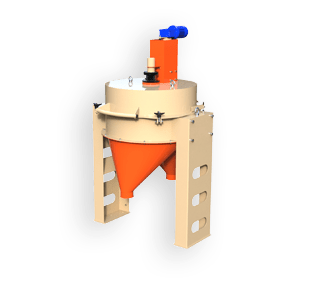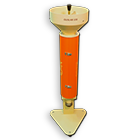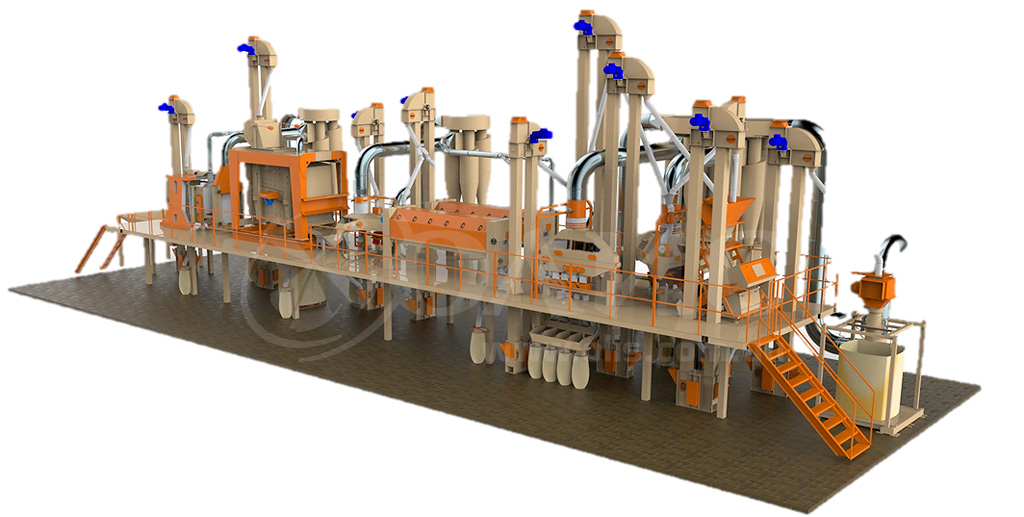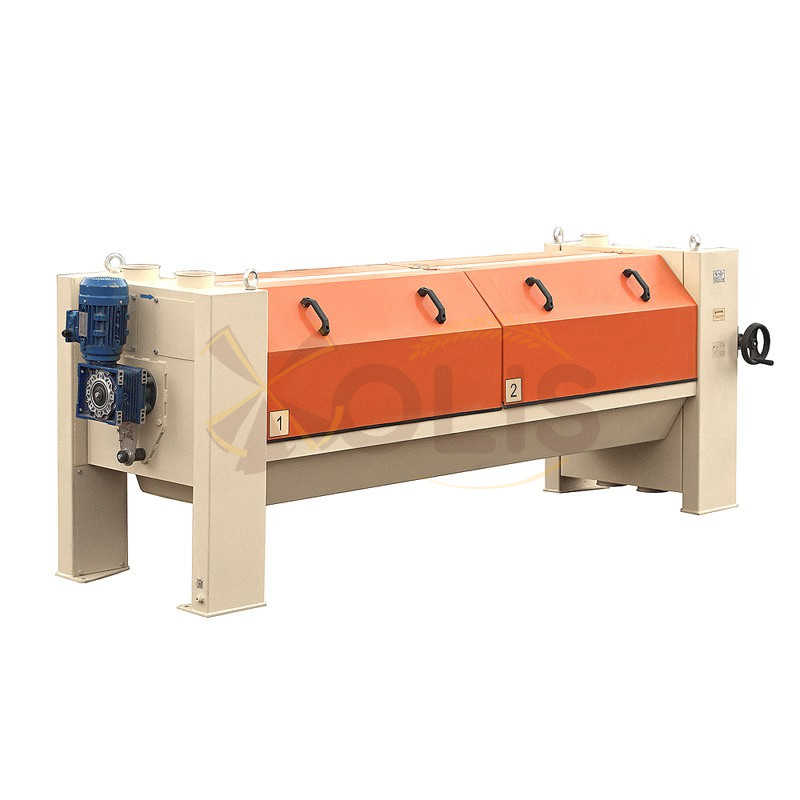Wheat, along with rye, oats and barley, belongs to real breads, but, unlike them, is characterized by the widest variety of varieties. This cereal is cultivated in the agricultural sector; it is used to make wheat flour and animal feed.
Wheat as a grain crop
Wheat is a herbaceous plant. Numerous studies have shown that Türkiye is considered the place of origin. The appearance of cereals occurred thousands of years ago, then it underwent many changes due to the human factor. Not only the visual characteristics of the plant changed, but also its main properties.
The height of a wheat stem, depending on the variety, can be from 30 to 150 cm. The stems are hollow and erect, there are obvious nodes, one plant usually has up to 12 stems. The sheets can reach 20 mm in width and have a linear, flat shape with veins arranged in parallel.
The root system of this cereal is fibrous, the inflorescence is a complex straight spike 4-15 cm in length, it can be ovoid or elongated. The cereal flower itself has two scales, films and stigmas, as well as three stamens. During the ripening process, grain fruits are formed.
Wheat is a food crop that is highly valued in many countries of the world, because its grains are used to make bakery products, pasta, confectionery, and it is involved in the preparation of alcoholic drinks such as beer and vodka. It is also an excellent food for pets that produce healthy food.
Sprouted wheat grains are a popular and effective active supplement because they contain a large amount of nutrients, minerals and vitamins. Their constant use has a positive effect on metabolism, increases tone, immunity and improves energy balance. Wheat contains fiber, vitamins B and E, magnesium, phosphorus, linoleic acid, potassium, pectin and other components that have a beneficial effect on the body.
Wheat products normalize liver function, speed up the digestive system, activate brain activity and strengthen the heart and blood vessels. Carbohydrates from such food will give you a boost of energy, and fiber will help in the fight against extra pounds. Wheat is a powerful antioxidant and contains phytoestrogens, which reduce the likelihood of cancer.
Today, there is a division of cereals into two groups depending on the types of spikelets and straws:
- real wheat;
- spelt.
The grain of the first group is easily separated from the flower film, the ear is securely attached to the stem, and the straw is quite elastic and flexible, it does not crush during threshing. The grains of the second group are poorly separated from the film, the ear does not sit so firmly on the stem, and the straw breaks quite easily during threshing.
There is also a division based on hardness. Prominent representatives of soft varieties are: sandomierka, kujawska, samarka, krasnokoloska, kostromka. Among the hard ones, red turk, ganovka, black grass, and white turk are distinguished. They have obvious differences.
In soft varieties of wheat, the straw is thin-walled, hollow along the entire length, and the spike is wider. There are practically no awns here, and the grains are short, pot-bellied in the middle and not so ribbed. The ear of durum varieties is similar to reed, has elongated films, the grains sit firmly, so threshing will require considerable effort. The awns of durum varieties can be several times larger than the size of the ear, and the grains themselves are long and similar to rye seeds.
There is one more type in this classification – durum. It is quite hard, but has a high amount of gluten. This wheat is used both in baking and in the production of pasta.
The use of wheat in various food-related industries is determined by its hardness. Bread flour is made from soft varieties, and cereals and pasta are made from hard varieties, since their gluten is strong and elastic. It is worth noting that production of cereals and pasta is a labor-intensive process that involves not only people, but also machines capable of processing large volumes .
You should pay attention to indicators such as glassiness and powderiness. If the grain cracks into irregularly shaped particles and has a yellowish translucent tint inside, it is called glassy. Mealy grains are easy to flatten and have a white interior.
Division of wheat into classes
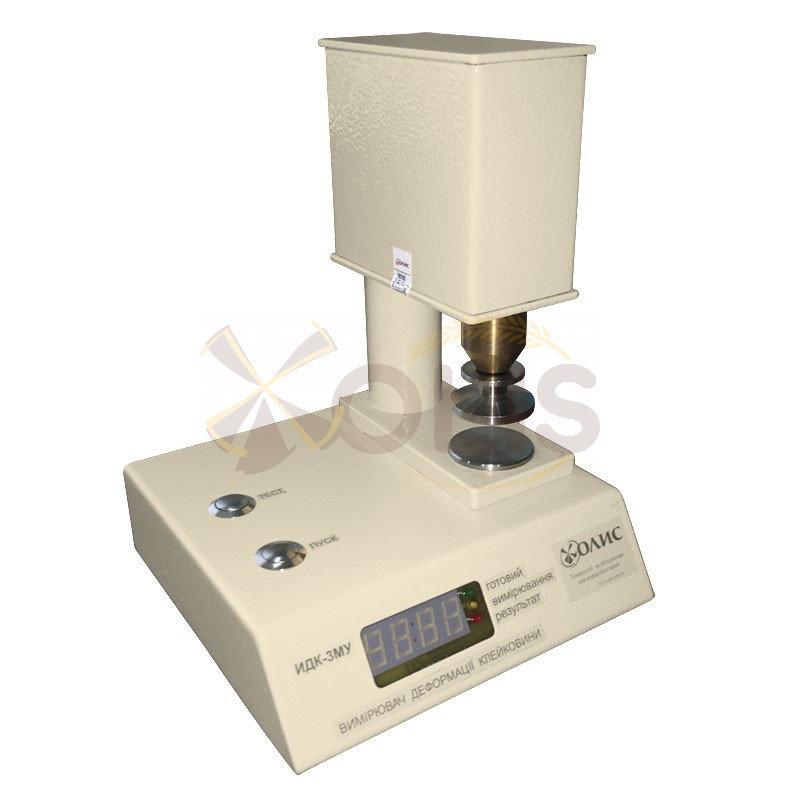
Depending on whether a particular crop is suitable for consumption, there are five main classes of wheat. You can only eat grains of the first four classes. The following indicators for assessing the quality of flour are taken into account: gluten content, color shade, appearance, glassiness and smell. The criterion for the presence of sprouted grains and debris is also important. In food wheat, the quality and quantity of gluten, as well as the presence of protein, are important.Another important indicator is grain contamination, which is determined by special devices.
For baking purposes, a high gluten content is required. Wheat of the highest, first and second classes is called strong; it is used to improve other, lower groups. This flour is made only from grains that meet the highest requirements and standards.
The third class has at least 23% gluten, it is used for making bread and bakery products. The fourth includes weak wheat, which needs improvement with higher varieties. The fifth is a forage class intended in Ukraine for animal feed.
When working with cereals, not only grain cleaning machines are used , but also special devices and instruments for assessing grain quality. One of these is IDK.
This device shows the gluten deformation index. The lower this indicator, the higher the grain quality. A good index is from 45 to 75, and a satisfactory index is 80-100.
Main types of wheat
According to the characteristics associated with aspects of botany and the time period during which the crop ripens, I distinguish the following wheat:
- soft red grain spring;
- hard spring;
- white grain spring;
- soft winter red grain;
- soft winter white grain;
- hard winter white grain.
The first type has subtypes: with vitreousness from 75% and burgundy inside, with 60% and a red center, with 40% and a pinkish core and up to 40% with yellow grain. The second type is divided into a subtype with a glassiness of 70% and brown grain, as well as with a golden interior, but without standard consistency. White grain spring wheat comes with a glassiness of more and less than 60%. The fourth type has subtypes similar to the first.
If wheat loses its color shade as a result of improper ripening or storage, then when is post-harvest grain cleaning, such specimens are marked as discolored or darkened.
What is the difference between winter and spring wheat?
In addition to the many varieties and varieties of this cereal, there is a division into winter and spring types. This classification is based on the characteristics of the growth period of the cereal plant.
Winter wheat is sown from late summer to mid-autumn, it ripens in the beginning or middle of next summer. This type has a higher yield, but it is better to cultivate in areas with a mild climate and snowy winters. During the cold period, the seeds are hardened, saturated with moisture, and at the first warmth they quickly germinate and actively grow.
Spring wheat is sown from March to May; for its full ripening, at least 100 frost-free days are needed. The harvest of such cereals is harvested in early autumn. This type is more drought-resistant, so it tolerates hot sunny days more easily, but does not like being around weeds, which can negatively affect the quality of the harvest. Spring wheat is known for its excellent baking qualities, but when growing it is important to add special fertilizers to the soil.
The grain mass, as a rule, cannot be called homogeneous. In addition to the grain itself, several types of impurities are allowed. Fractions are whole and slightly damaged grains. The following types of impurities include:
- half damaged by pests or broken grains without identifying the type of defects;
- seeds characterized by swelling, a greenish tint, and those that have been pressed;
- damaged, with brownish or milky shells;
- those that have sprouted, lost their natural color or become deformed;
- particles of spelled, rye and other cereals;
- admixtures of various grains and leguminous plants.
Impurities are:
- residues of organic and mineral origin;
- parts and grains of low-value uncultivated plants;
- grains affected by fusarium and also turning black;
- harmful impurities (for example, additions of trichosemide, sophora, smut, etc.).
On an industrial scale, all this is sorted, recorded and selected in order to obtain truly high-quality products for various purposes.
Conditions for obtaining a good wheat harvest
Wheat, like other cereal crops, is demanding on soil and processing technologies. Depending on whether spring or winter wheat is grown, certain recommendations related to sowing, care and harvesting must be followed. Spring wheat should be sown as early as possible in spring, when the temperature of the seed layer reaches 5-6 degrees Celsius.
Winter crops are sown at the end of summer in a narrow-row manner. Caring for cereal plants involves the use of special rollers, harrows, and weed control products. Spring wheat is especially vulnerable to them.
To control cereal pests, special sprayers, chemical compounds and insecticides are used. If necessary and there is a long absence of precipitation, it is necessary to carry out automated watering of wheat so that it produces a good harvest. Ripe grains are collected by separate or direct combining and processed using a specialequipment for the grain processing industry.
The more modern technologies are involved in the process of sowing, caring for and harvesting grain, the better the final product and the less human labor costs. There is a large assortment of instruments and special measuring devices that provide accurate information on temperature and humidity, help determine the timing of harvest, weediness, etc.
Wheat is considered one of the oldest plants actively cultivated by people in the fields. It has been grown for more than 10 thousand years and is of fundamental importance as a raw material, without which we cannot imagine life. And the more responsibly we behave in the process of caring for the crop, the better results we will get.
For additional information and advice, please call: ☎ +38 (067) 822-85-58.








